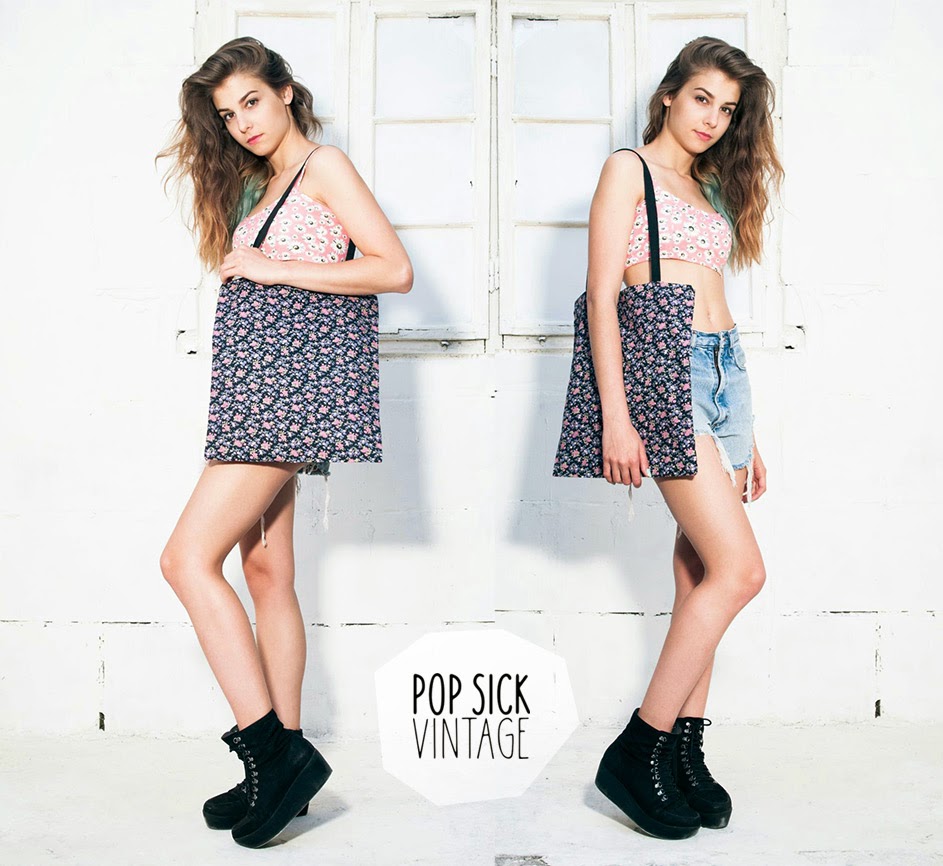The economy of the developed world is based on a culture of “throw it out and buy a new one.” We rarely bring our battered shoes to the shoemaker any more, although the life span of our mass-produced footwear has decreased considerably throughout the modern era. The same goes for other fashion items, clothes and accessories. But does old necessarily mean useless? Not at all. Vintage clothing, that is, wearing garments from previous decades, proves that old items have a place in our contemporary life. In fact, our approach to products made in the past affect how our future will look like. I have interviewed Krisztina Szerján, head of Pop Sick Vintage, a company selling vintage items and producing re-vintage garments and bags, in order to learn more about sustainable fashion.
The CEU Weekly (TCW): As we can read on your blog, Pop Sick Vintage is devoted to popularizing vintage and re-vintage clothing and accessories. Re-vintage is not a widely used term, could you explain what it refers to?
Krisztina Szerján (KSZ): To put it simply, re-vintage is the recycling of old clothes and textiles into new clothes and accessories. It can also be called ‘reworked clothing,’ but I prefer to call it ‘re-vintage’ because this term is more telling. We can differentiate basically between two types of re-vintage: retailoring and redesign. Retailoring includes the improvement of an old item by tiny but meaningful changes, such as replacing the buttons, removing shoulder-pads or altering the tailoring. Redesign means a more radical and a truly creative process, the combination of various old clothes or textiles into something totally new.
TCW: What kind of materials do you use for re-vintage purposes? And where do you find them?
 KSZ: Our aim is to find old but good quality materials. Good quality materials are mainly clothes and textiles manufactured more than twenty years ago, as in the 1990s the textile industry moved its factories to China, and later to India, Bangladesh, and Cambodia. Under these new conditions, the garment industry started to produce predominantly low-quality textiles, and clothes of ephemeral life span. Furthermore, we should not forget the moral aspect; these factories rely heavily on the labour of low-paid, often underage local populations and they are ‘famous’ for their unsafe and inhumane working conditions. As for our resources in Hungary, a good start for finding old but good quality materials is a visit to countryside second-hand markets.
KSZ: Our aim is to find old but good quality materials. Good quality materials are mainly clothes and textiles manufactured more than twenty years ago, as in the 1990s the textile industry moved its factories to China, and later to India, Bangladesh, and Cambodia. Under these new conditions, the garment industry started to produce predominantly low-quality textiles, and clothes of ephemeral life span. Furthermore, we should not forget the moral aspect; these factories rely heavily on the labour of low-paid, often underage local populations and they are ‘famous’ for their unsafe and inhumane working conditions. As for our resources in Hungary, a good start for finding old but good quality materials is a visit to countryside second-hand markets.TCW: Why should people buy re-vintage clothes?
If you buy re-vintage, you can fill up your wardrobe with good quality and unique clothes at a low price. I believe that re-vintage and vintage can be a real alternative to fast-fashion items which are mass-produced and which typically do not last for more than one season. You can trust re-vintage items in that respect; clothes that are wearable twenty years after their manufacturing will definitely not lose their good quality in the upcoming ten or so years. Vintage and re-vintage in the garment industry is not just naïve nostalgia for old times. It highlights the general decline of quality in the field and encourages us to recycle good quality materials instead of increasing the production of low-quality new items. And last but not least, re-vintage also gives us an opportunity to make the best of our creativity and imagination and to transform our ideas into tangible fashion items without increasing our ecological footprint.
TCW: Thank you for talking to us about sustainable fashion!
You can check out re-vintage tote bags and crop tops at http://www.popsickvintage.com/.
Alexandra Medzibrodszky
Hungary, History




0 comments:
Post a Comment